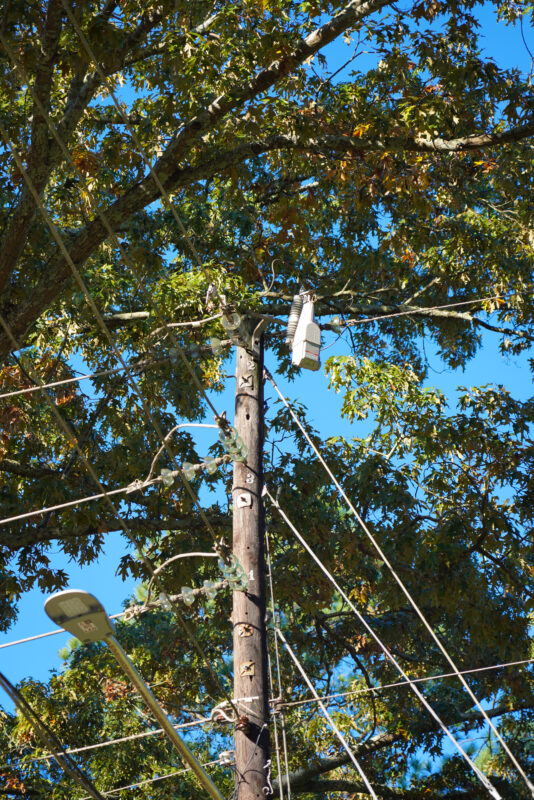America’s Sustainable & Resilient Energy Future Starts with the Grid
If you can imagine a world without internet connectivity, life-saving medical equipment, clean water, food production, and transportation, you can imagine a world without an electric grid.
The U.S. grid, a vast network of interconnected power lines and infrastructure, is an engineering marvel. Dating back to 1882, when Thomas Edison unveiled the country’s first power plant in New York City, the grid has handled the transmission and distribution of electricity to homes, businesses, and industries. Given its importance and our growing dependence on all things electric — for lighting, heating, cooling, appliances, computers, electronics, machinery, medical equipment, and public transportation systems — it is not an exaggeration to call the grid the backbone of our modern lives.
Yet, the grid is showing its age. While Edison’s Manhattan plant was the country’s first, most of America’s electrical infrastructure was built in the 1960s and 1970s. Back then, the population was around 181 million. Most households had one television, and few household appliances were electric. Today, at approximately 332 million people, the U.S. population is nearly double, and everything from smartphones to smart cars depends on electricity.
 Unfortunately, our electric grid has not kept pace. Much of the equipment from the last century is still out there. While the Bipartisan Infrastructure Bill and the Inflation Reduction Act allocate about $29 billion for power grid upgrades, according to the World Resources Institute, that number is just a fraction of the needed grid funding. This stark reality underscores the urgent need for more substantial investment.
Unfortunately, our electric grid has not kept pace. Much of the equipment from the last century is still out there. While the Bipartisan Infrastructure Bill and the Inflation Reduction Act allocate about $29 billion for power grid upgrades, according to the World Resources Institute, that number is just a fraction of the needed grid funding. This stark reality underscores the urgent need for more substantial investment.
The time for action is now. The global transition to clean energy in the form of electricity is accelerating, storms are growing more frequent and destructive, and we are more dependent than ever on electricity. Our aging transmission and distribution system needs a significant overhaul to manage these complexities and build a resilient electric energy future. We can’t afford to wait any longer.
Building a 21st-century grid requires broad collaboration. Together — utilities, regulators, government, industry, and consumers — have a unique opportunity to transform our grid infrastructure and address the growing demand for sustainable and resilient electricity. This means upgrading existing transmission lines to incorporate distributed energy resources and building new lines to bring energy from remote renewable resources to population centers.
The distribution grid — which carries power to individual homes and businesses at the local level — will need even more investment than the transmission system. Historically underinvested, 60% of U.S. distribution lines have surpassed their 50-year life expectancy. According to the Edison Electric Institute, roughly 90% of all outages occur along these distribution systems. This makes a compelling case to prioritize spending on distribution.

Investment in the distribution grid improves resilience and its ability to withstand, respond to, and recover rapidly from power interruptions, no matter the weather. This increases overall electricity service reliability, supports a successful electric energy future, and helps the nation’s economy. According to the Department of Energy, power outages cost U.S. businesses roughly $150 billion annually. At the same time, the “cost” to American families is immeasurable if home healthcare devices aren’t powered, electric vehicles can’t be charged, and manufacturing facilities and water treatment plants can’t function.
The great news is that we’re innovating distribution grid technology right now that can help the country better manage its energy needs, modernize infrastructure, and ensure the energy transition to clean power is a smooth and successful one. Strategic investment in these new technologies can make a real difference by:
- Improving Grid Resilience: In addition to exponential growth in electrical load, extreme weather events, such as hurricanes, prolonged heat waves, and intense storms, are becoming more frequent and severe. Distribution grids like overhead lines are particularly vulnerable to wind, heavy rain, and downed trees. Technology exists right now that can improve the grid’s ability to maintain or restore power quickly after a disruption. Strategic investment in long-term distribution grid resilience can help to reduce or even make sustained outages a thing of the past.
- Making the “Self-Healing” Grid a Reality: New advanced distribution grid technology locates and isolates faults in overhead and underground lines, reroutes power for faster service restoration, and operates independently of centralized control systems. These technologies dramatically improve reliability and power availability and can be installed and deployed on the grid today.
- Supporting Distributed Energy Resources (DERs): A grid built for centralized power must be upgraded to incorporate distributed energy resources at the grid edge and support bi-directional power flow. Investment here helps maximize the installation of new types of energy on the grid, enabling a stable, flexible grid with reliable and resilient power. This is especially important as we shift to clean energy sources through renewables and work to minimize our dependence on fossil fuels.
Our power grid is experiencing new challenges and complexity for which it wasn’t built, and there is still much more to come as our dependence on electricity continues to grow. Increased demand from electric vehicles, equipment, and industrial machines keep adding to the power load growth and stress on the grid. To transform our grid for the 21st century, take full advantage of the energy transition, and ensure power, no matter the time or weather, we must prioritize investment, including the grid’s very edge, where we plug in and expect the power to stay on.
Now is the time to work together to ensure a reliable, resilient, and sustainable energy future. The question is not “Can we afford to invest in the distribution grid?” but, rather, if we want to build a sustainable and resilient electrical energy future, “Can we afford not to?”
By Anders Sjoelin, President and CEO, S&C Electric Company
Have a tip for CleanTechnica? Want to advertise? Want to suggest a guest for our CleanTech Talk podcast? Contact us here.
Latest CleanTechnica.TV Videos

CleanTechnica uses affiliate links. See our policy here.


